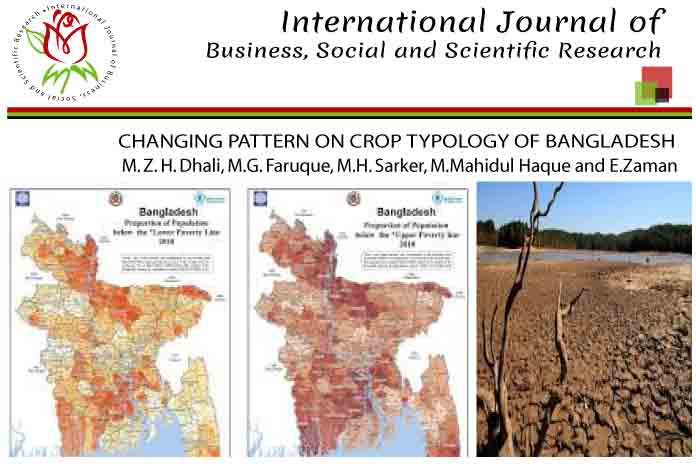CHANGING PATTERN ON CROP TYPOLOGY OF BANGLADESH

This paper reports the changing pattern of crop typology in the changing socio-economic and climatic context in Bangladesh. In Bangladesh crop typology concept and cluster wise crop production system is new. It needs research with the collaboration of the research institute and side by side do some farmers level demonstration through Department of Agriculture Extension. Seven upazila were selected from seven divisions as five types of area for development of crop typology during the period of March-August in 2013 to determine the crop typology of Bangladesh.. Primary data were collected through focus group discussion, Rapid Rural Appraisal and Key Informant Interview (KII) from respective departments/Upazila Agriculture Offices. Secondary data were also collected from the deferent sources. According to the secondary data of DAE, DAE officials and local famers, the dominant cropping pattern is Fallow-T.Aman-Fallow which is practiced in 84.04% of the NCA in Dacope upazila, the dominant cropping pattern is Fallow-T.Aman-Fallow on 24% of the NCA in Khagrachari sadar upazila, the dominant cropping pattern is Fallow-T.Aman-Boro which is practiced in 31.54% of the NCA in Gazipur Sadar upazila, dominant cropping pattern is Fallow-T.Aman-Fallow which is practiced in 24% of the NCA in Amtali upazila, the dominant cropping patterns are Fallow-T. Aman-HYV Boro and Fallow-Fallow-HYV Boro which is practiced in 16.7% and 16.3% of the NCA in Gomastapur upazila, dominant cropping pattern is Fallow-Fallow-Boro which is practiced in 65% of the NCA in Jamaganj upazila and the dominant cropping pattern is Fallow-T. Aman-HYV Boro which is practiced in 45% of the NCA in Pirganaj upazila resspectively The empirical results revealed that, crop production in Bangladesh is affected by the natural hazards and there is variability in socio-economic and climatic factor. Land type was one of the major factors for selecting crops and cropping patterns in the pilot upazilas. Therefore, cluster based on land type were considered for developing crop typology. The empirical results were suggested some typologies for selected areas which are given for Policy recommendation: T.Aman and other saline tolerant species prioritized in Coastal, Saline and Mangrove regions, Boro cropping, and fruit cultivation (banana, mango, litchi etc.) prioritized in Hilly and Steep Slope areas, Jackfruit rice crops (Aus, T.Aman, Boro) and inter-crops(zinger+turmeric) emphasized in Madhupur and Drought prone regions, Aus, Aman, Vegetables, Pulses and Oil Seeds prioritized Central Coastal ans Saline areas, Pond side vegetables (mainly Aus and T.Aman) highlighted Barind and Heat Stress areas and Baukull, Zinger cultivation recommended with T.Aman cultivation in Haor and Flash Flood regions.

